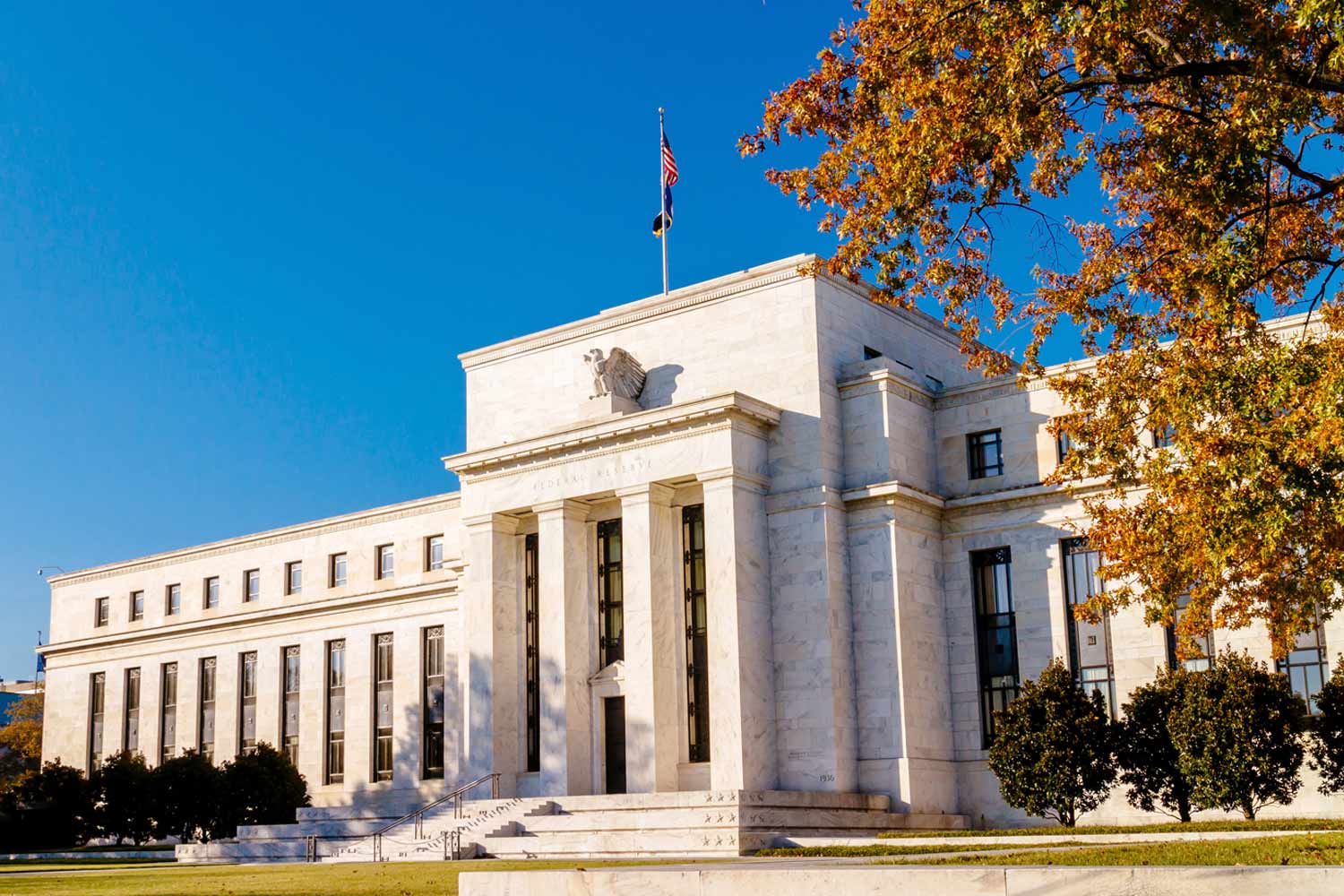The Federal Reserve announces an emergency rate cut
The G7 consensus was pessimistic enough to force Powell to counteract the potential for a recession, but there are signs of a slow return to normal in China
Published on 04 Mar 20205 minute read
Written by Chris Godding

The Q7 consensus was pessimistic enough to force Powell to counteract the potential for a recession, but there are signs of a slow return to normal in China.
On Tuesday 3 March the Governor of the Federal Reserve, Jerome Powell, announced a 0.5% intra-meeting ‘emergency’ cut to interest rates in the US. This followed a G7 crisis management call focused on the threat of COVID-19, and is the first 50bps move in either direction since the global financial crisis in 2008.
The initial response in US and European equities was positive, only to turn the other way in the US post the European close as investors considered the implications. However, the topic of this note is not on the short-term market reaction, but on the longer-term considerations. Clearly, in the short term we can expect to see continued volatility in markets as we digest the impact of the virus on the global economy. I recommend reading the recent piece by my colleague Ben Seager-Scott on why over-trading can be harmful to your wealth in times like this.
Outlook for markets suggests a recession
Given what we know today, there is definitely justification and merit for the emergency pre-emptive rate cut. We were not privy to the details of the G7 discussion, but it is clear that the consensus on the call was pessimistic enough to force Powell to counteract the potential for a recession. The virus is materially impacting the global supply chain and the coincident hit to consumer activity, and consumption is rippling around the world. Other central banks are likely to follow the Fed’s lead, particularly in Asia, where higher rates give ample room to cut, and also at home at the Bank of England. In the event that we reach a quick resolution, I am not worried about the ability to reign in exuberance and inflation fairly quickly with effective policies. In this regard, the approach is highly rational and correct in the circumstances.
Considering the outlook for markets, the intra-meeting cut suggests that the prospects for a recession have indeed increased significantly, but it is also unclear whether a cut in interest rates will solve this. The problem we have today is one of both demand and supply rather than restrictive credit conditions. The efficacy of the policy is the key question and it is fairly obvious that central bankers are bound to be relative bystanders in the current circumstance.
The monetary policy tool box is close to empty
History also suggests that the policy will have little effect on equities, particularly in the US, where valuations are stretched. Deutsche Bank looked at what happened to the S&P 500 in the first week, six months and one year after the last seven emergency cuts: the medium price moves were +2.8% (1w), -4.3% (6m) and -9.2% (1yr). Considering that the average 1yr price return (excluding dividends) for the S&P 500 is around 6%, this is a considerable six months and one year under-performance post when the Fed deemed it necessary to do an emergency cut. Market participants now expect the Fed to cut again in March and perhaps in June, but it is the reality of recession that tends to drive markets rather than rates once the tipping point is reached.
“Everyone has a plan, until they get punched in the mouth” – Mike Tyson
Just as relevant is the observation that the conventional monetary policy tool box is close to empty, leaving the prospect of significant balance sheet expansion and the erosion of fiat money an increasingly likely option, which is one reason why we continue to favour gold in portfolios as our non-fiat currency.
Gerard Minack of Minack Advisors observes that the exhaustion of monetary policy accentuates the difference for market outcomes between a COVID-19 recession scenario and the COVID-19 slowdown-with-recovery scenario.
Low rates would turbo-charge a rebound in risk assets under the slowdown-with-recovery scenario. However, most Fed easing cycles are associated with recession; therefore the start of an easing cycle is normally a good signal to sell equities. There have been three easing cycles amidst economic soft-landings and equities rallied sharply in all three cases. I agree with Minack’s conclusion that this time would not be different if recession is avoided – my inclination is to attach a higher probability to this positive outcome and the subsequent probability of an equity asset bubble. Evidence to support this bias is thin but, after recording the worst PMI confidence reading in history last month, there are signs of a slow return to normal in China and the surrounding regions. Trade volumes are up and factory production is on the rise again. Draconian control measures have helped enormously, and although it is perhaps naïve to assume the same can be achieved in the west, it is encouraging nonetheless.
The end of a secular trend
Europe and Japan are vulnerable in the meantime, having already exhausted their monetary policy options. A coordinated fiscal response is clearly required in Europe as a policy tool at this point. In current circumstances, rules are made to be broken.
I have been debating and expecting the likelihood of a shift to fiscal policy for some time, anticipating the next recession to be the catalyst that forces the political hands. COVID-19 may have brought the time frame forward and if loose fiscal policy is sustained, I agree with Minack’s conclusion that it will mark the end of the secular stagnation era. That would represent a sea-change for investors. The secular trends of the past 40 years – notably the decline in long and short rates, disinflation, rising leverage and rising asset valuations – could all end and then reverse.
In times like these, policymakers need to revisit our base case assumptions. My favourite quote from Mike Tyson says it all: “Everyone has a plan, until they get punched in the mouth”.
Get insights and events via email
Receive the latest updates straight to your inbox.
You may also like…






